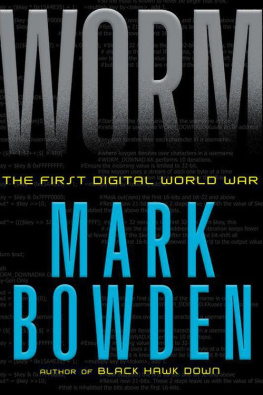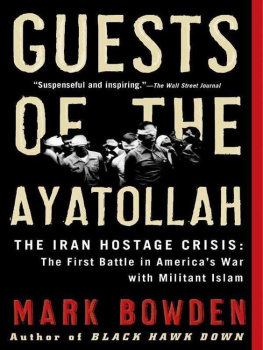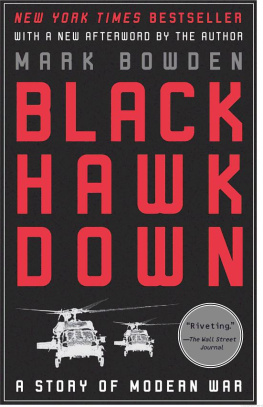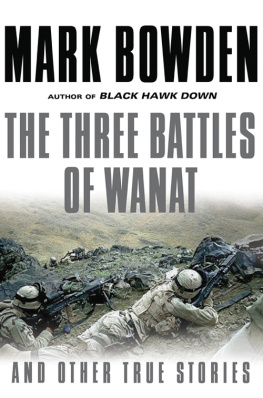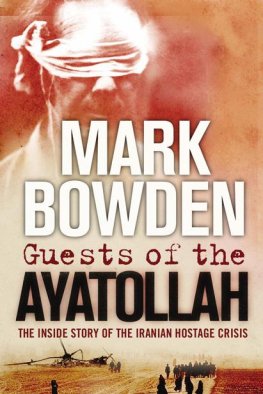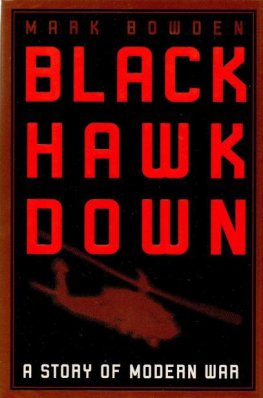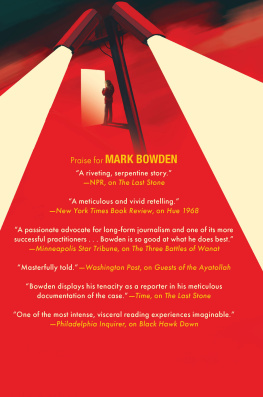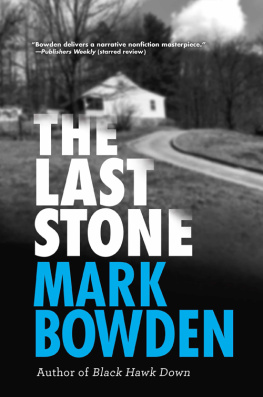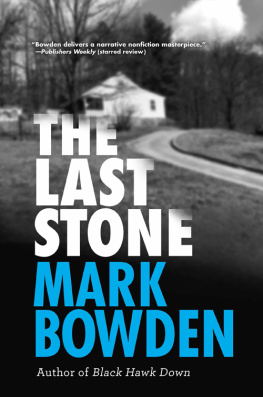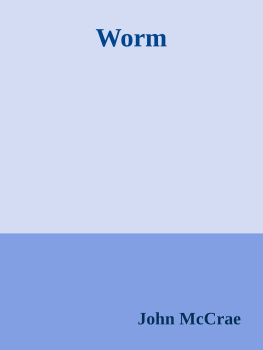Mark Bowden - Worm: The First Digital World War
Here you can read online Mark Bowden - Worm: The First Digital World War full text of the book (entire story) in english for free. Download pdf and epub, get meaning, cover and reviews about this ebook. year: 2011, publisher: Atlantic Monthly Press, genre: Romance novel. Description of the work, (preface) as well as reviews are available. Best literature library LitArk.com created for fans of good reading and offers a wide selection of genres:
Romance novel
Science fiction
Adventure
Detective
Science
History
Home and family
Prose
Art
Politics
Computer
Non-fiction
Religion
Business
Children
Humor
Choose a favorite category and find really read worthwhile books. Enjoy immersion in the world of imagination, feel the emotions of the characters or learn something new for yourself, make an fascinating discovery.
- Book:Worm: The First Digital World War
- Author:
- Publisher:Atlantic Monthly Press
- Genre:
- Year:2011
- Rating:3 / 5
- Favourites:Add to favourites
- Your mark:
- 60
- 1
- 2
- 3
- 4
- 5
Worm: The First Digital World War: summary, description and annotation
We offer to read an annotation, description, summary or preface (depends on what the author of the book "Worm: The First Digital World War" wrote himself). If you haven't found the necessary information about the book — write in the comments, we will try to find it.
Worm: The First Digital World War — read online for free the complete book (whole text) full work
Below is the text of the book, divided by pages. System saving the place of the last page read, allows you to conveniently read the book "Worm: The First Digital World War" online for free, without having to search again every time where you left off. Put a bookmark, and you can go to the page where you finished reading at any time.
Font size:
Interval:
Bookmark:

Also by Mark Bowden
Doctor Dealer
Bringing the Heat
Black Hawk Down
Killing Pablo
Finders Keepers
Road Work
Guests of the Ayatollah
The Best Game Ever
Worm
The First Digital
World War
Mark Bowden

Atlantic Monthly Press
New York
Copyright 2011 by Mark Bowden
All rights reserved. No part of this book may be reproduced in any form or by any electronic or mechanical means, including information storage and retrieval systems, without permission in writing from the publisher, except by a reviewer, who may quote brief passages in a review. Scanning, uploading, and electronic distribution of this book or the facilitation of such without the permission of the publisher is prohibited. Please purchase only authorized electronic editions, and do not participate in or encourage electronic piracy of copyrighted materials. Your support of the authors rights is appreciated. Any member of educational institutions wishing to photocopy part or all of the work for classroom use, or anthology, should send inquiries to Grove/Atlantic, Inc., 841 Broadway, New York, NY 10003 or .
Published simultaneously in Canada
Printed in the United States of America
FIRST EDITION
ISBN-13: 9780802195128
Atlantic Monthly Press
an imprint of Grove/Atlantic, Inc.
841 Broadway
New York, NY 10003
Distributed by Publishers Group West
www.groveatlantic.com
11 12 13 14 15 10 9 8 7 6 5 4 3 2 1
For the inimitable James M. Naughton, aka, Swami, who in a typical moment of inspired whimsy thirty years ago, named me science writer.
Contents
| 1 |
| 2 |
| 3 |
| 4 |
| 5 |
| 6 |
| 7 |
| 8 |
| 9 |
| 10 |
| 11 |
Principal
Characters
T. J. Campana , Senior Manager for Investigations for Microsofts Digital Crimes Unit. He now works out of Microsofts Redmond, Washington, campus, and was the primary representative of the software giant in the Cabal.
John Crain , ICANN Senior Director for Security, Stability, and Resiliency, the British-born point man for ICANN contribution to the Cabal, who secured cooperation from Top Level Domains worldwide. He lives in Long Beach, California.
Andre DiMino , a cofounder of Shadowserver.com, a nonprofit botnet-hunting service, was one of the first to sinkhole and study Conficker, from his home in New Jersey.
Rodney Joffe , South Africanborn head of security for Neustar, Inc. A successful entrepreneur now based in Phoenix, he holds several patents and is an internationally known expert in Internet security. He has been a White House adviser on cybersecurity issues and is the official head of the Cabal (The Conficker Working Group).
Chris Lee , Georgia Tech grad student who took over the Cabals sinkholing operation. He now works for the Department of Homeland Security.
Andre Dre Ludwig , a North Virginiabased consultant, now a senior manager for Neustar, Inc., handling Top Level Domain security, who was responsible for technical strategy within the Cabal, technical verification, and was liaison to the security industry.
Ramses Martinez , Information Security Director of VeriSign, Inc., which operates two of the Internets thirteen root servers from Dulles, Virginia.
Phil Porras , Program Director for SRI International in Menlo Park, California, was one of the first to study Conficker and spearheaded efforts to predict its behavior and defeat it. He led the Cabals reverse engineering subgroup.
Hassen Saidi , a native of Algeria with a PhD in computer studies, who was the primary reverse engineer on Phil Porrass staff at SRI International. He dissected the various strains of Conficker as they appeared.
Paul Twomey , CEO and President of ICANN in Marina Del Rey, California, during the fight to contain Conficker.
Paul Vixie , an American Internet pioneer based in San Francisco, outspokenly critical of the way the Internet is structured and the flaws in the Windows Operating System. Founder, Chairman, and Chief Scientist for the Internet Systems Consortium.
Rick Wesson , CEO of Support Intelligence and owner of Alices Registry, based in San Francisco, one of the founding (and most controversial) members of the Cabal, who initiated the strategy of containing Conficker by anticipating and buying up domain names generated by the worms algorithm.
1
Zero
NEW MUTANT ACTIVITY REGISTERED
X-Men; The Age of Apocalypse
The new worm in Phil Porrass digital petri dish was announced in the usual way: a line of small black type against a white backdrop on one of his three computer screens, displaying just the barest of descriptorstime of arrival... server type... point of origin... nineteen columns in all.
The readout began:
17:52:00... Win2K-f... 201.212.167.29
(NET.AR): PRIMA S.A, BUENOS AIRES,
BUENOS AIRES, AR. (DSL)...
It was near the end of the workday for most Californians, November 20, 2008, a cool evening in Menlo Park. Phil took no notice of the newcomer at first. Scores of these digital infections were recorded on his monitor every day, each a simple line on his Daily Infections Logactually, his Multi perspective Malware Infection Analysis Page. This was the 137th that day. It had an Internet Protocol (IP) address from Argentina. Spread out across the screen were the infections vitals, including one column that noted how familiar it was to the dozens of antivirus (AV) companies who ride herd on malicious software (malware). Most were instantly familiar. For instance, the one just above was known to all 33 of the applicable AV vendors. The one before that: 35 out of 36.
This one registered a zero in the recognition column: 0 of 37. This is what caught his eye when he first noticed it on his Log.
Zero .
Outside it was dark, but as usual Phil was still at his desk in a small second-story office on the grounds of SRI International, a busy hive of labs, hundreds of them, not far from Stanford University. It is a crowded cluster of very plain three-story tan-and-maroon buildings arrayed around small parking lots like rectangular building blocks. There is not a lot of green space. It is a node of condensed brainpower, one of the best-funded centers for applied science in the world, and with about seventeen hundred workers is the second-largest employer in Menlo Park. It began life as the Stanford Research Institutehence the initials SRIbut it was spun off by the university forty years ago. Its a place where ideas become reality, the birthplace of gizmos like the computer mouse, ultrasound imagery machines, or tiny robot drones. The trappings of Phils office are simple: a white leather couch, a lamp, and a desk, which is mostly taken up by his array of three computer monitors. On the walls are whiteboards filled with calculations and schematics and several framed photos of vintage World War II fighter planes, vestiges of a boyhood passion for model building. The view out his window, through a few leafy branches, is of an identical building across an enclosed yard. It could be any office in any industrial park in any state in America. But whats remarkable about the view from behind Phils desk has nothing to do with whats outside his window. Its on those monitors. Spread out in his desktop array of glowing multicolored pixels is a vista of cyberspace equal to... say, the state of Texas.
One of the inventions SRI pioneered was the Internet. The research center is a cornerstone of the global phenomenon; it owned one of the first two computers formally linked together in 1969, the first strand of a web that today links billions. This was more than two decades before Al Gore popularized the term information superhighway. There at the genesis, every computer that connected to the nascent network was assigned its own 32-bit identity number or IP address, represented in four octets of ones and zeros. Today the sheer size of the Internet has necessitated a new system that uses 128-bit addresses. SRI ceded authority for assigning and keeping track of such things years ago, but it retains ownership of a very large chunk of cyberspace. Phils portion of it is a relatively modest, nothing-to-brag-about-but-damned-hard-to-get, slash 16, a block of the original digital universe containing 65,536 unique IP addressesin other words, the last two octets of its identity number are variable, so that there are two to the sixteenth (216) possible distinct addresses, one for each potential machine added to its network. It gives him what he calls a large contact surface on the Internet. Hes like a rancher with his boots propped on the rail on the front porch before a wide-open prairie with, as the country song says, miles of lonesome in every direction. Its good for spotting intruders.
Next pageFont size:
Interval:
Bookmark:
Similar books «Worm: The First Digital World War»
Look at similar books to Worm: The First Digital World War. We have selected literature similar in name and meaning in the hope of providing readers with more options to find new, interesting, not yet read works.
Discussion, reviews of the book Worm: The First Digital World War and just readers' own opinions. Leave your comments, write what you think about the work, its meaning or the main characters. Specify what exactly you liked and what you didn't like, and why you think so.

